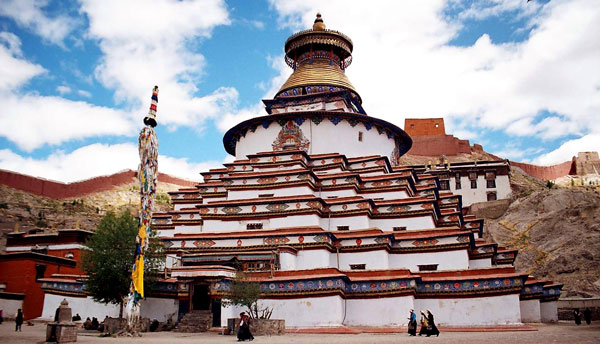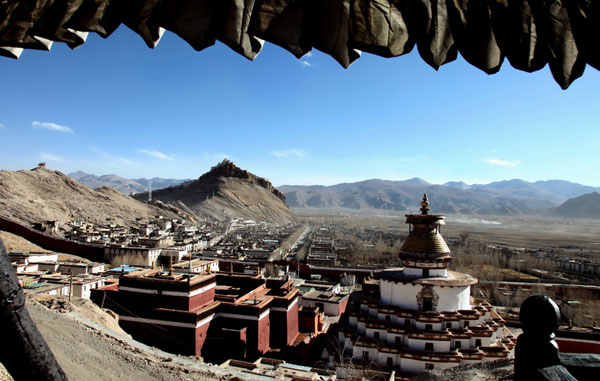Exploring Tibetan culture through monasteries
|
Pelkhor Choede (Baiju Si) is located at the northeast corner of Jiangzi County. It is a typical Tibetan Buddhist temple that combines the pagoda and temple, "with pagoda in the temple, and temple in the pagoda". Temple and pagoda are harmonized to highlight each other. It is a monastery having the characteristics of Han, Tibetan and Nepali architecture. Pelkhor Choede enjoys a high status in Tibet Buddhist history because it houses three sects - Sakyapa, Kadampa and Gelugpa together. Murals in the Monastery are also well known. These murals mainly relate to Esoteric and Exoteric Buddhism, and stories about the Buddhas. Tourists will find them almost everywhere in the monastery. [Photo by Zhou Jiyu] |
|
Pelkhor Choede (Baiju Si) is located at the northeast corner of Jiangzi County. It is a typical Tibetan Buddhist temple that combines the pagoda and temple, "with pagoda in the temple, and temple in the pagoda". Temple and pagoda are harmonized to highlight each other. It is a monastery having the characteristics of Han, Tibetan and Nepali architecture. Pelkhor Choede enjoys a high status in Tibet Buddhist history because it houses three sects - Sakyapa, Kadampa and Gelugpa together. Murals in the Monastery are also well known. These murals mainly relate to Esoteric and Exoteric Buddhism, and stories about the Buddhas. Tourists will find them almost everywhere in the monastery. [Photo by Zhou Jiyu] |
 0
0 









Go to Forum >>0 Comments